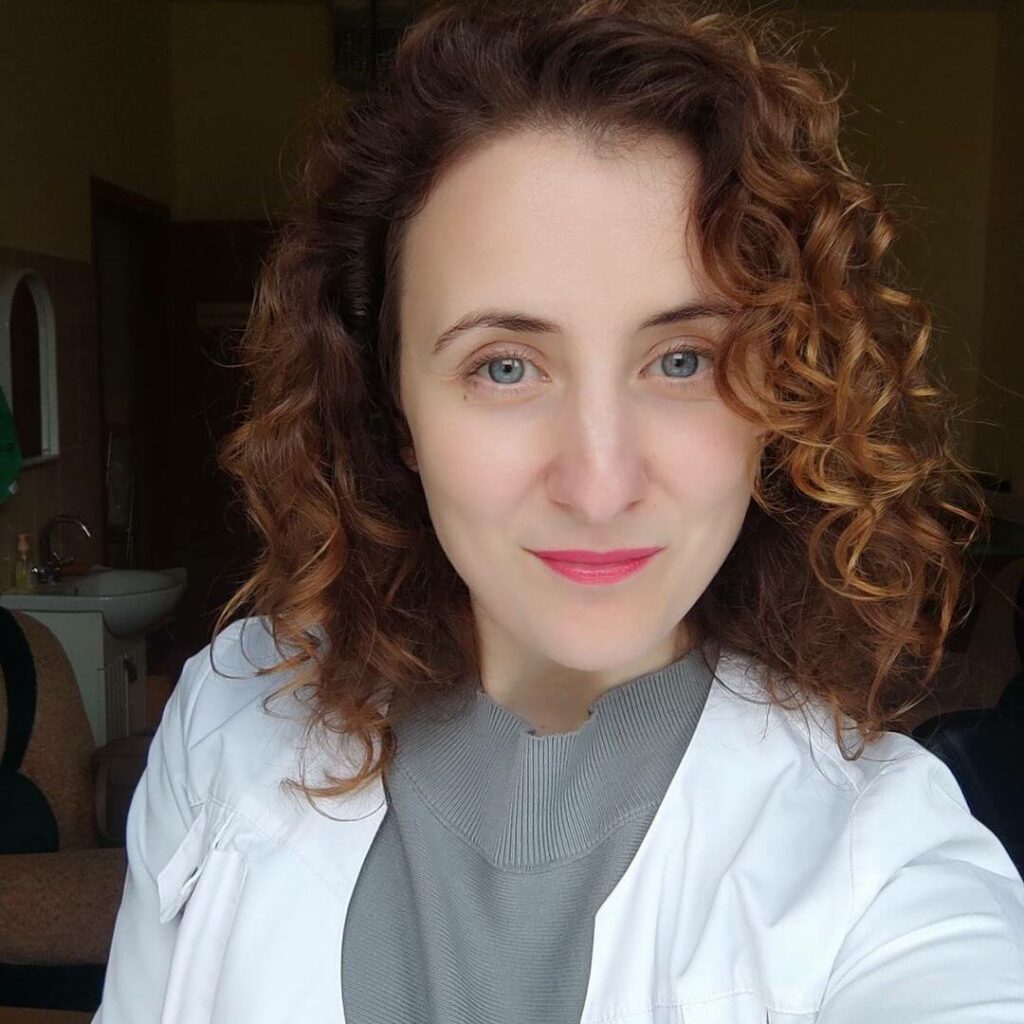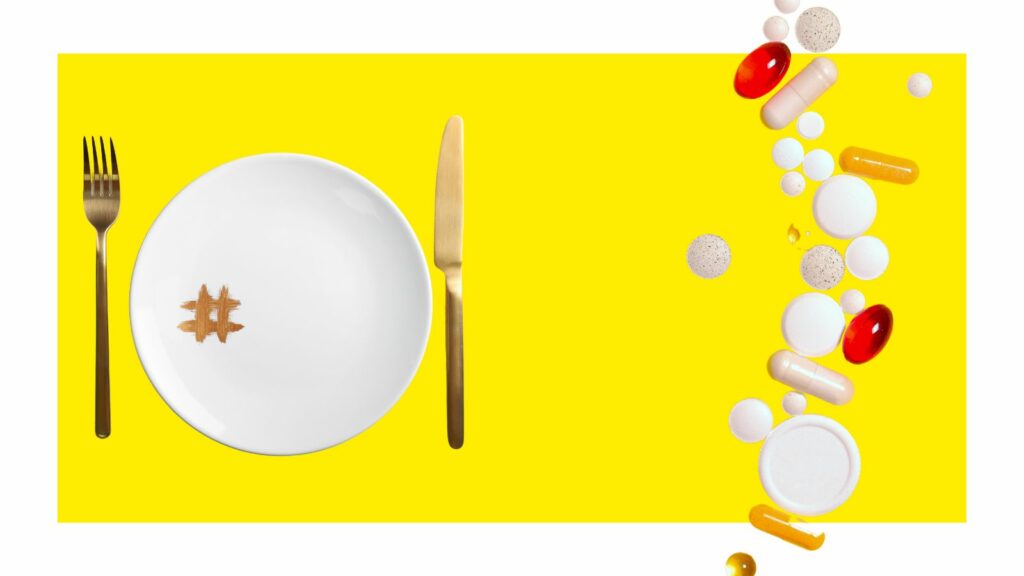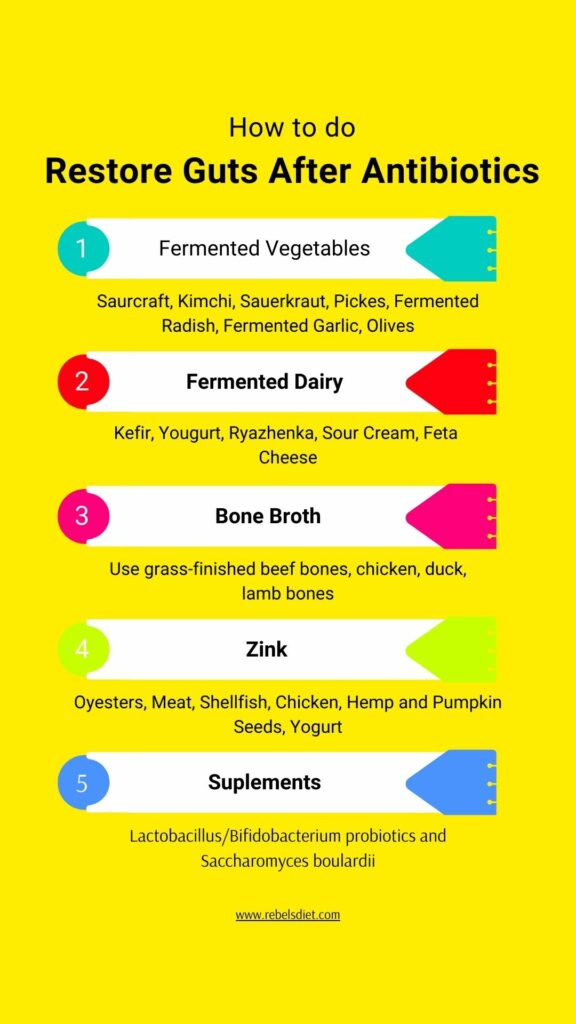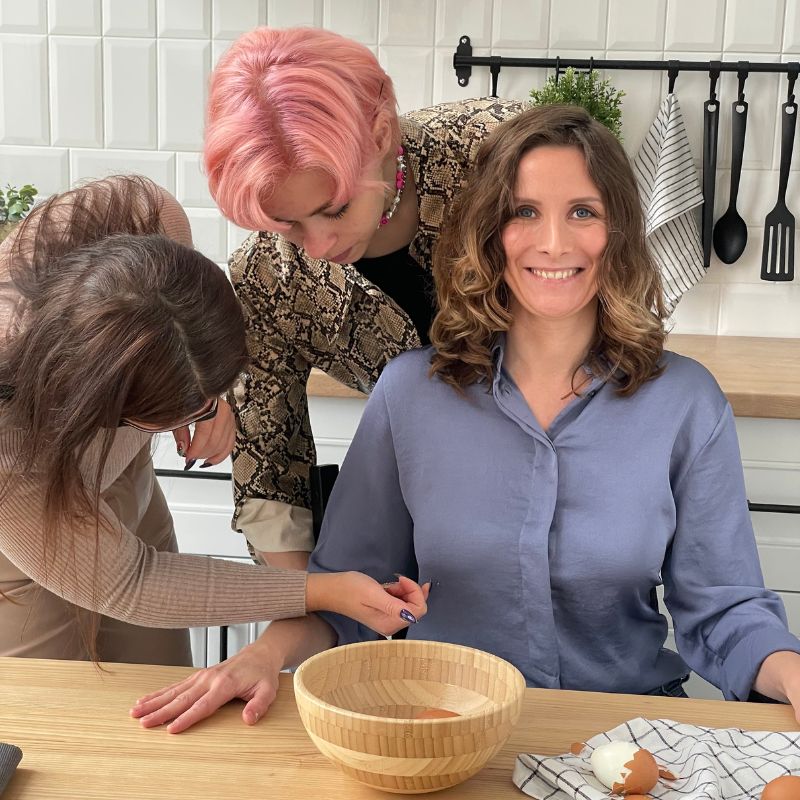Olena Islamkina explains if it’s OK to take antibiotics while intermittent fasting and how to do it safely.

The article has been reviewed by Julia Kiltina, MD, family doctor
Recently, I got my teeth extracted. It’s a long, sad story, but it’s important now that I’ve got antibiotics prescribed. I’m doing a prolonged fasting period at the beginning of my cycle, which happened right after my tooth was removed. So I decided to create this little guide on how to take antibiotics while fasting.

Table of content
- How often should I take antibiotics?
- Do I need to take an antibiotic before, after, or with a meal?
How do antibiotics affect the stomach and gut? - How to take antibiotics while fasting?
- Can fasting replace antibiotics?
- What to eat during the feast window while on antibiotics?
- Do antibiotics break a fast?
- What to do after antibiotic treatment?
How often should I take antibiotics?
There are different classes of antibiotics that work in various ways and need to be taken at different periods of the day.
- Penicillins (penicillin v, amoxicillin) – before or after eating, every 8 or 12 hours.
- Cephalosporins (cephalexin) – without food, every 6 or 12 hours.
- Fluoroquinolones (ciprofloxacin) – with or without food, every 12-24 hours.
- Aminoglycosides (gentamicin): many antibiotics in this class are administered via IV, eye drops, or ear drops. Some of them may be taken orally, but the time varies a lot depending on the type of drug and situation.
- Macrolides (azithromycin) – with or without food, every 8-12 hours.
- Tetracyclines (doxycycline) – before or after eating, every 6 or 8 hours.
As you see, most of the antibiotics give you a decent period for fasting, which is 8-12 hours. Even though the recommended fasting time is usually 16 hours, 12 hours would also be OK under these circumstances.
Pay attention: it’s better to discuss this at the doctor’s office. You would prefer to have a bigger dose with a bigger pause in between (and sometimes it’s not possible), but don’t extend the time between pills by yourself.
Do I need to take an antibiotic before, after, or with a meal?
And again, it depends a lot on the type of antibiotics. Some are recommended to be taken on an empty stomach, others during a meal.
How do antibiotics affect the stomach and gut?
Unfortunately, antibiotics kill not only bad but also good bacteria that help us thrive. Even a single antibiotic treatment can make our microbiota significantly less diverse. In the short term, antibiotic treatment can cause abdominal pain, bloating, nausea, and diarrhea.
Antibiotics appear to have little effect on the stomach; most pain and problems are of an intestinal nature.
Surprisingly (no), in some cases, antibiotics can make gut symptoms less bothersome. People with SIBO and IBS, for example, may notice that their gut symptoms lessen when they take antibiotics for a respiratory infection. But it’s not an encouragement for self-prescription. These gut issues have specific ways of treatment and specific antibiotics if needed.
How to take antibiotics while fasting?
Taking into consideration all the above, in many cases, it is OK to take most of the antibiotics on an empty stomach. It won’t interfere with their primary goal of treating bacterial infections. But it can cause some abdominal pain, and it’s more because of the death of good bacteria than some irritation.
Macrolide antibiotics, cephalosporins, penicillins, and fluoroquinolones may cause more stomach upset than other antibiotics.
Common sense says we can fast in any way we want besides taking antibiotics. But there aren’t any reliable guidelines or doctors’ recommendations about it. Most MDs would tell you not to combine antibiotics and fasting but to eat light (whatever that means) food.
If you feel better taking antibiotics with food but want to extend fasting, you can consider taking pills with bone broth or psyllium husk powder dissolved in water. Bone broth will also help the intestinal layer heal.
How to take amoxicillin while fasting?
Amoxicillin is one of the most commonly prescribed oral antibiotics in the United States, according to the CDC. It is a penicillin antibiotic used to treat bacterial infections, such as:
- chest infections (including pneumonia)
- dental abscesses stomach ulcers (along with other antibiotics)
The usual dose of amoxicillin capsules for adults is 250 mg to 500 mg, taken three times a day before or after meals. Common side effects of taking amoxicillin include nausea and diarrhea, which occur in 1 in 10 people. However, severe side effects are rare; amoxicillin is well tolerated and can be taken with or without food.
If you experience side effects, it is better not to fast while you have antibiotic treatment. Ask your doctor about probiotics to start restoring the health of your microbiome right away.
Can fasting replace antibiotics?
Many people naturally lose appetite when they have an infection. Eating less is a natural response that allows the body to use all its needed resources on healing, not digestion.
Some studies (at least in mice) show that fasting during infection could be beneficial for the body. But in others, the lack of food worsens the condition.
Intermittent fasting is a proven way to lower inflammation. It can help fight viruses. Antibiotics are medications that destroy or slow down the growth of bacteria. Antibiotics ONLY treat certain infections caused by bacteria. Before the antibiotic invention, the mortality rate from many bacterial diseases (for example, pneumonia) was a craze.
Substituting antibiotics with fasting isn’t a great idea. But if you have a loss of appetite during antibiotic treatment, fasting can become a complementary therapy and help you heal faster.

What to eat during the feast window while on antibiotics?
Your gut microbiota thrives when you eat whole, unrefined products and avoid sugar and toxic vegetable oil.
Eating in the feeding window while you take antibiotics is no different than you usually do (and you eat low-carb, good-quality food, don’t you?).
But you may want to add some probiotics in the form of supplements and foods.
Taking probiotics with antibiotics is a great way to reduce negative side effects, especially diarrhea.
In studies, the best effect was shown when antibiotics were taken together at the same time. Both Lactobacillus/Bifidobacterium probiotics and Saccharomyces boulardii were shown to be effective.
Antibiotics can affect women a lot, not only the gut but the vaginal microbiome. Consider taking probiotics to support women’s health (iHerb, Amazon).

What are the best probiotic foods?
- Sauerkraut (Leuconostoc mesenteroides, Lactobacillus brevis, Pediococcus pentosaceus, Lactobacillus plantarum);
- Sugar-free full-fat yogurt (Lactobacillus acidophilus, Streptococcus thermophilus, Lactobacillus delbrueckii subsp. bulgaricus);
- Fermented pickles (Lactobacillus casei, Lactobacillus rhamnosus, Lactobacillus plantarum, Lactobacillus brevis);
- Kefir (Lactobacillus brevis, Lactobacillus acidophilus, Lactobacillus casei, Lactococcus lactis, Saccharomyces cerevisiae);
- Kimchi (Weissella koreensis, Lactobacillus sakei, Lactobacillus graminis, Weissella cibaria, Leuconostoc mesenteroides).
I’ve already said about bone broth. It will help to restore the gut after antibiotics.
Some antibiotics, such as amoxicillin, can cause zinc deficiency (the symptom is frequently a metallic taste). The best sources of zinc are meat, shellfish, and especially oysters. Nuts and seeds can also be useful in this situation – hemp and pumpkin seeds are the best.
Do antibiotics break a fast?
Antibiotics don’t contain any significant amounts of calories, so taking antibiotics during fasting won’t be considered breaking it.
But more importantly, the goal of intermittent fasting is to make the body strong and healthy. It’s just a tool, and in the case of serious infection, antibiotics are the optimal tool.
What to do after antibiotic treatment?
- Fast! Yes, now, when you are done. Fasting is a perfect way to renew cells and restore the gut lining.
- Continue eating probiotic foods.
- Or try a carnivore diet. Some people restore the microbiome more effectively by reducing all plant-based foods.
- Manage stress. It crazily affects the gut microbiome, which has already been damaged by medication.
- Don’t use antibiotics in daily life. Soap, toothpaste, and different washing liquids are a no-no before, after, and during antibiotic treatment.
- Be dirty! In a good way. To restore gut bacteria diversity, you need to contact different microbes. Gardening, barefoot walking, going into nature, and playing with pets help a lot.
- Hugging and kissing your loved ones. It reduces stress (see #4) and helps you get good bacteria.
How to fast when taking other medication
It depends on the specific medication. The main rule is to consult with your doctor and discuss medication. Most of the diabetics medications will need adjustment to fasting, because it affects blood glucose and insulin levels.
Don’t miss new posts! (and get Keto Food Guide instantly)
Studies
CDC: Outpatient Antibiotic Prescriptions — United States, 2015

